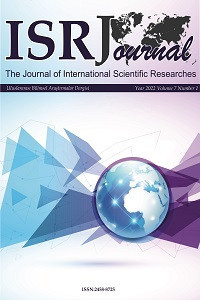Savaş Kanunları Nelerdir? Nükleer Silahların Tehdit Veya Kullanım Yasallığı
Genel olarak insan haklarına ve savaş zamanında sivillerin yaşam haklarına verilen artan önemle birlikte, bütün dünyayı ve içindeki tüm canlıları nüklüer silah kullanımının yol açtığı felaket ortamından kurtarmanın önemi sonunda anlaşılıyor. Bu çalışmanın çıkış noktası Birleşmiş Milletler Genel Kurulu tarafından Uluslararası Adalet Divanı'na yönlendirilen "Nüklüer silah tehdidi ya da kullanımı yasal mıdır?" sorusuna gitmektedir. Bu açıdan, bu çalışmada katılımcı devletelerin sözlü ve yazılı ifadeleri ile Uluslararası Adalet Divanı üyelerinin görüşlerinin araştırılması yoluyla nüklüer silah tehdidi ya da kullanımının yasallığı analiz edilmiştir. Sonuçta, Uluslararası Adalet Divanı belirsilikten dolayı yorum yapmayı kabul etmemesine rağmen, nüklüer silah tehdidi ya da kullanımının aslında uluslararası hukuka, silahlı çatışma prensiplerine ve uluslararası insan hakları yasasının prensip ve kurallarına aykırı olduğunu kabul etmiştir.
Anahtar Kelimeler:
Uluslararası Adalet Divanı, Uluslararası İnsan Hakları, Silahlı çatışma, Biyolojik, Kimyasal, Nüklüer silahlar
What are The Laws of War? Legality of The Threat or Use of Nuclear Weapons
Along with the incremental concerns as to human rights in general and the right to life of the civilians in war times, the vitality of taking necessary actions to save whole planet and the livings in it from the catastrophic environment caused by nuclear weapons use is, at last, getting understood. The origin of this study goes back to the question "Is the threat or the use of nuclear weapon legal" directed by UN General Assembly to International Court of Justice (ICJ) From this point, in this study is analyzed the legality of the threat and use of the nuclear weapons by searching through oral and written statements of the participant states and points of view of the member of the International Court of Justice. In conclusion, although ICJ declined to leave a comment concerning the question due to the ambiguity, ICJ accepted that the threat or use of nuclear weapons is actually contrary to the rules of international law, armed conflict principles, and principles and rules of international humanitarian law.
Keywords:
International Court of Justice, International Humanitarian Law, Armed conflict, Biologic, Chemical, Nuclear weapons,
___
- Additional protocols I-II-III-IV, retrieved from https://www.icrc.org/applic/ihl/ihl.nsf/vwTreaties1949.xsp
- Antarctic Treaty (1959), retrieved from http://www.state.gov/t/avc/trty/193967.htm (24.01.2016)
- Atomic Energy Agency (1957), retrieved from https://www.iaea.org/about/about-statute (24.01.2016)
- Biological and Toxin Weapons convention (1972), retrieved from http://www.un.org/disarmament/WMD/Bio/ (24.01.2016)
- Chemical Weapons Convention (1993), retrieved from https://www.icrc.org/ihl/INTRO/553?OpenDocument (24.01.2016)
- Convention on Certain Conventional Weapons (1980), retrieved from https://www.icrc.org/ihl/INTRO/500?OpenDocument (24.01.2016)
- Customary International Humanitarian Law, retrieved from https://www.icrc.org/customary-ihl/eng/docs/home (24.01.2016)
- Environmental Modification Treaty (1977), retrieved from http://www.state.gov/t/isn/4783.htm
- Geneva Convention I,II,II,IV (1949), retrieved from https://www.icrc.org/applic/ihl/ihl.nsf/vwTreaties1949.xsp
- Hague Regulations (1899 and 1907), retrieved from https://www.icrc.org/ihl/INTRO/195 (24.01.2016)
- Nuclear Non-Proliferation Treaty (1968), retrieved from http://www.un.org/disarmament/WMD/Nuclear/pdf/NPTEnglish_Text.pdf (24.01.2016)
- Outer Space Treaty (1967), retrieved from https://www.gov.uk/government/uploads/system/uploads/attachment_data/file/270006/Treaty_Principles_Activities_Outer_Space.pdf
- Opinions, A. Statute of the International Court of Justice, article 38 retrieved from http://www.icj-cij.org/documents/?p1=4&p2=2#CHAPTER_II (24.01.2016)
- Partial Test Ban Treaty (1963), retrieved from http://www.state.gov/t/isn/4797.htm (24.01.2016)
- Universal declaration of Human Rights ( 1948), article 3, retrieved from http://www.ohchr.org/EN/UDHR/Documents/UDHR_Translations/eng.pdf (24.01.2016)
- UN report (1980), retrieved from http://www.un.org/womenwatch/daw/beijing/otherconferences/Copenhagen/Copenhagen%20Full%20Optimized.pdf
- United Nations Conventional Weapons Convention and its Protocols (1980), retrieved from https://www.icrc.org/en/document/1980-convention-certain-conventional-weapons-and-its-protocols-ratification-kit#.VKkgXWSG-rY (24.01.2016)
- Prohibition of the Emplacement of Nuclear Weapons and other Weapons of Mass Destruction on the Sea-Bed and the Ocean Floor and in the Subsoil Thereof (1971), retrieved from http://www.nti.org/treaties-and-regimes/treaty-prohibition-emplacement-nuclear-weapons-and-other-weapons-mass-destruction-seabed-and-ocean-floor-and-subsoil-thereof-seabed-treaty/ (24.01.2016)
- UN General Assembly, Res. 49/75 K on request for an advisory opinion from the International Court of Justice on the legality of the threat or use of nuclear weapons, 15 December 1994, eleventh paragraph.
- UN Report. Appendix 1, paras. 1-35; 1983 WHO Report. p. 8; 1987 WHO Report, p. 9.
- ICJ, Nuclear Weapons case, Advisory Opinion, 8 July 1996, ICJ Reports 1996, p. 226.
- Written statements in the Nuclear Weapons case of the United Kingdom (ibid., § 97) and United States (ibid., § 100).
- ISSN: 2458-8725
- Yayın Aralığı: Yılda 3 Sayı
- Başlangıç: 2016
- Yayıncı: Salih YILDIZ
Sayıdaki Diğer Makaleler
Türkiye Ombudsmanı: Yapısal Kurumsal ve İşlevsel Yönleri
Çok Katlı Pazarlama Sistemi ve Uygulaması: Yozgat İli Tupperware Firması Örneği
Sağlık İşletmelerinde Finansal Performansın Değerlendirilmesi: Karaman Devlet Hastanesi Örneği
Savaş Kanunları Nelerdir? Nükleer Silahların Tehdit Veya Kullanım Yasallığı
